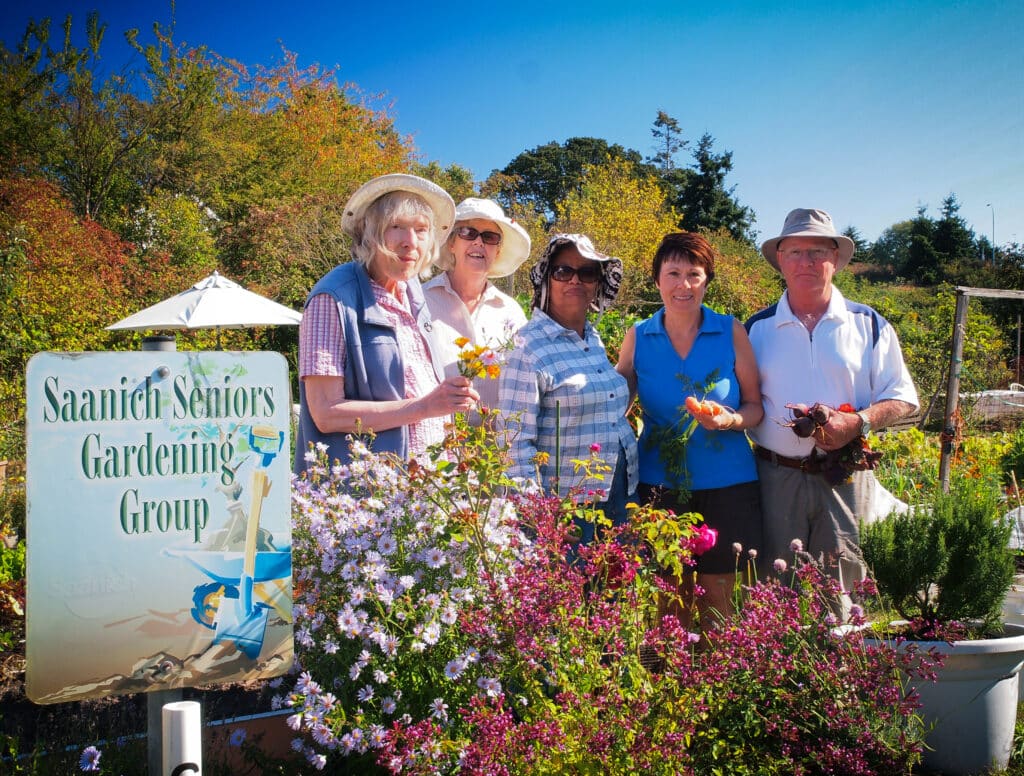The District of Saanich combined global-scale perspectives and local-level partnerships to create the conditions for healthy, active aging in the municipality.
One of 33 partner cities world wide that participated in the World Health Organization (WHO) Global Age-Friendly Cities Project in 2006, Saanich joined Rio de Janeiro, Cancun, Nairobi, Moscow, New Delhi, Tokyo, and others in a study which identified major physical and social barriers to active aging.

The District of Saanich Global Age-Friendly Cities Report (2008) presents the findings of the local research conducted by the University of Victoria’s Centre on Aging, consultation with community agencies and citizens, and strategic planning by municipal staff representing a diverse range of public services.
The report identifies concrete, age-friendly indicators and offers practical tools to guide advocacy, community development, and policy changes to support an age-friendly environment.
The District of Saanich has taken numerous actions to achieve the vision of improving environmental and social factors to support an aging population, and in 2012 Saanich was one of nine communities in BC to be presented with the Age-friendly BC Community Recognition award in celebration of their hard work and dedication.
Partnerships
The Provincial Government of British Columbia was the original partner for the District of Saanich for this project. As the project moved forward, Saanich partnered with caregivers and local service providers to hold focus groups with seniors. A group consisting of a mix of municipal, non-profit, academic, and business people, as well as seniors, met to examine suggestions for local actions in the next phase of the project. Partners included:
- The Province of British Columbia Ministry of Healthy Living and Sport
- University of Victoria Centre on Aging
- Vancouver Island Health Authority
- BC Transit
- Saanich Silver Threads
- Seniors Serving Seniors, Saanich Volunteer Services Society
- TD Canada Trust Shelbourne Street
Summary of the process
In the first phase of the project, UVic’s Centre on Aging researchers focused on the lived experience of seniors in the community. The researchers met with Saanich seniors, caregivers, community leaders, and service providers representing regional and local agencies such as B.C. Transit, Silver Threads, Saanich Volunteer Services Society, Vancouver Island Health Authority and several national banks and community associations.
Focus group participants offered their insights on the following topics defined by the WHO:
- Outdoor spaces and buildings
- Transportation
- Housing
- Respect and social inclusion
- Social participation
- Communication and information
- Civic participation and employment
- Community support and health service
The second phase involved the development of an action-oriented response based on the focus group results. A group consisting of a mix of municipal, non-profit, academic, and business people, as well as seniors, met to examine suggestions for local actions. Municipal staff then worked to identify age-friendly policies already in place and prioritize new projects to make the city more age-friendly.
Key Themes
The study identified that the foundation for an age-friendly Saanich involves the following key themes:
- Value Older Persons
- Responsive Planning, Development and Engineering Design
- Small Changes Make a Difference
- Create Relationships through Effective Communication
Key Outcomes and Impact
The report findings include identification of common barriers to an age-friendly community, documentation of best practices in Saanich, and recommendations for an age-friendly future.
Just of few of the many age-friendly initiatives implemented in Saanich include:
- Completion of an accessibility audit
- Completion of an ccess to transit study regarding access to/from place of residence and transit stops
- Zoning Bylaw amended to indicate Saanich Adaptable Housing regulations for apartments and voluntary guidelines for townhouses and single family dwellings to better facilitate independent living
- Seniors’ rates and assistance for low income individuals through the Leisure Involvement for Everyone (L.I.F.E.) program facilitating access to recreation programs and services
- Community social and recreational organizations such as Saanich Silver Threads, Saanich Volunteer Services Society, Cedar Hill New Horizons, the Goward House Society and the Cordova Bay 55 Plus Association through facilities and/or grants
- Participation by seniors in civic elections is promoted by mobile polling stations travelling to assisted living and seniors’ residences, advance polling stations and the planned use of accessible facilities
- Rehabilitation services and programs such as Frail Elderly Fitness, Gentle Fit, Osteofit, Water Walking, Massage Therapy and other adapted physical activity programs in partnership with the Vancouver Island Health Authority
- Development of a resource guide that lists organizations offering services to seniors in Saanich
Resources
- The District of Saanich Age-Friendly web pages
- Age-Friendly Community Action Summaries (via SeniorsBC) include summaries of actions in Saanich, Revelstoke, and West Vancouver
- University of Victoria Centre on Aging
For more information about age-friendly initiatives in Saanich, please contact:
Sandra Pearson
Manager Community Services, Parks and Recreation, District of Saanich
Sandra.pearson@saanich.ca | 250 475 5409





